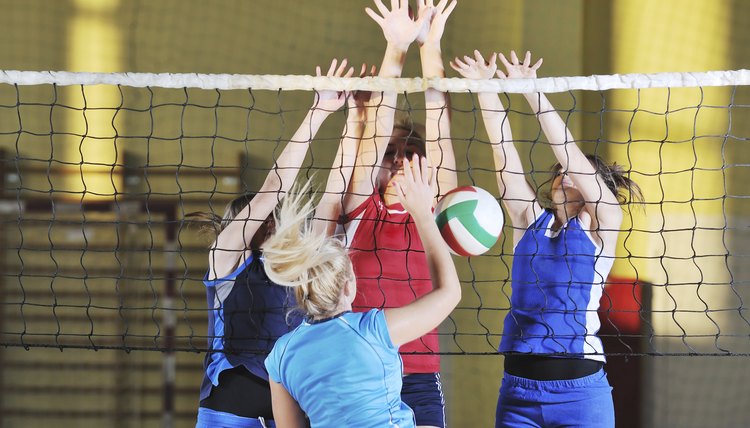Volleyball Safety Rules

Volleyball is a fairly low-risk sport. In fact, some 82 percent of injuries attributed to the sport are minor, according to the National Athletic Trainer’s Association. The most common volleyball injuries are sprains and strains. There are some simple safety rules that players and coaches should follow to avoid these types of injuries.
Knee Pads
Volleyball players need to wear knee pads, advises the Olympia School District in Washington. Knee pads are important because one of the top sources of volleyball injuries is from players diving for the ball, according to “Managing Risk in Sport and Recreation: The Essential Guide for Loss Prevention,” by Katharine M. Nohr. Players also need to flex their knees and aim to land on body parts that have muscular padding when they dive for balls, advises Milwaukee Public Schools. Long-sleeved jerseys help keep players safe as well.
Playing Area
Ensure the playing surface and net are up to par. This will go a long way toward preventing injury. For example, check to ensure that the posts don’t have any sharp areas, the floor is not uneven or slippery, that protective padding is placed on walls and posts, and that posts are capped, advises Nohr.
Avoiding Collisions
Practice makes perfect, advises Nohr, because another top source or injury in volleyball is from players colliding. MPS requires players to call for the ball to avoid collisions. Also, players are advised to jump straight up as opposed to into the net when blocking or spiking the ball, and to land on both feet. Players also need to strengthen and condition the muscles they use for jumping, advises NATA.
Proper Fit
Players are advised to double-check pads and shoes for proper fit before each practice or game. Regulation volleyball rules also require players to remove all metal hair fasteners, jewelry and other body adornments before practicing or playing.
Hydration and Sun Protection
Volleyball players need to use sun protection when playing outdoors, advises Nohr. Players also need to pay careful attention to drinking fluids, whether playing indoors, on the beach or in a back yard.
References
Writer Bio
Linda Tarr Kent is a reporter and editor with more than 20 years experience at Gannett Company Inc., The McClatchy Company, Sound Publishing Inc., Mach Publishing, MomFit The Movement and other companies. Her area of expertise is health and fitness. She is a Bosu fitness and stand-up paddle surfing instructor. Kent holds a bachelor's degree in journalism from Washington State University.
